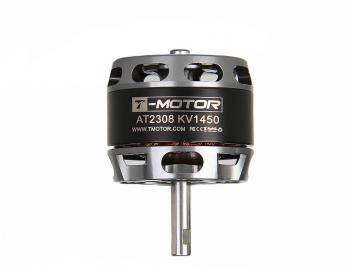Drone Motor Efficiency: Factors to Consider for Longer Flight Times
In the world of unmanned aerial vehicles (UAVs) or drones, one of the most critical factors that can make or break the flying experience is motor efficiency. Achieving longer flight times is a coveted goal for drone enthusiasts and professionals alike. It's not just about soaring higher and capturing breathtaking aerial shots; it's also about ensuring that the drone can stay in the air for extended periods without frequent battery replacements. In this comprehensive guide, we will delve deep into the intricacies of drone motor efficiency and explore the various factors to consider in order to enjoy those prolonged flights.

Before we dive into the specifics, let's grasp the fundamental concept of drone motor efficiency. In essence, it refers to the ability of the motor to convert electrical power from the battery into mechanical power to spin the propellers efficiently. A more efficient motor can produce more thrust while consuming less power, ultimately resulting in longer flight times.
Motor Types: Brushed vs. Brushless
The type of motor your drone employs plays a pivotal role in its overall efficiency. Two common motor types used in drones are brushed and brushless motors.
Brushed Motors
Simplicity: Brushed motors are relatively simple and cost-effective.
Durability: They can withstand rough usage and are less prone to wear and tear.
Drawbacks: However, they tend to be less efficient and have a shorter lifespan compared to brushless counterparts.
Brushless Motors
Efficiency: Brushless motors are known for their superior efficiency and power-to-weight ratio.
Durability: They have a longer lifespan due to reduced friction and wear.
Complexity: On the flip side, brushless motors are more complex and generally cost more.
When aiming for longer flight times, choosing brushless motors is often the preferred choice. The efficiency gains can make a significant difference, especially for professional drone applications.
Propeller Selection
The type and size of propellers paired with your drone motors also heavily influence efficiency. Propellers come in various shapes and materials, each with its own set of characteristics.
Size Matters
Larger propellers typically offer better efficiency as they can move more air with each rotation. However, they also demand more power to spin. Therefore, it's crucial to strike a balance between size and power consumption for optimal motor efficiency.
Material Considerations
Propellers can be made from materials such as plastic, carbon fiber, or even wood. Carbon fiber propellers are favored for their lightweight yet sturdy nature, contributing positively to motor efficiency.
Voltage and Current
The voltage supplied to the motors, in conjunction with current, plays a vital role in motor performance. Higher voltage can result in increased motor efficiency, but it's essential to ensure that your drone's components can handle the higher voltage safely.
Motor Kv Rating
The Kv rating of a drone motor refers to its RPM (rotations per minute) per volt. Motors with a lower Kv rating are typically more efficient for drones designed for longer flight times. These motors can generate more torque at lower speeds, which is ideal for sustained flight.
Aerodynamics and Weight
The aerodynamics of your drone's frame and the overall weight significantly impact motor efficiency. Streamlined designs and lighter materials can reduce drag and allow your drone to cut through the air more efficiently, thereby extending flight times.
Flight Modes and Optimization
Modern drones come equipped with various flight modes, including modes optimized for longer flights. Utilizing these modes, which may adjust motor power and throttle response, can help you maximize efficiency during specific tasks like aerial photography or surveillance.
Battery Technology
Last but certainly not least, the type and quality of the battery you use are paramount in determining flight duration. Lithium-polymer (LiPo) batteries are commonly used in drones due to their high energy density. Investing in high-capacity, quality LiPo batteries can significantly extend your drone's flight times.
In conclusion, achieving longer flight times for your drone is an achievable goal by considering several key factors. Brushless motors, appropriate propeller selection, voltage optimization, motor Kv rating, aerodynamics, and battery technology all play critical roles. By carefully evaluating and optimizing these aspects, you can ensure that your drone takes to the skies for extended periods, capturing breathtaking vistas and accomplishing missions with ease.
More details please contact T-MOTOR
598
0
0


Comments
All Comments (0)